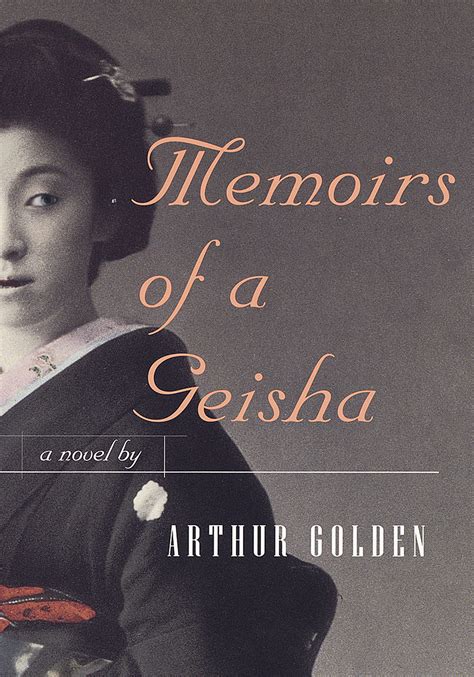In the tranquil streets of Kyoto, a city steeped in tradition and secrets, a young girl named Chiyo Sakamoto lived a life that would become a testament to the intricate and often misunderstood world of the geisha. Born into a poor fishing family, Chiyo’s life was forever altered when she and her sister, Satsu, were sold to an okiya, a geisha house, in the prestigious Gion district. This marked the beginning of a journey that would take Chiyo from the depths of despair to the heights of elegance, as she transformed into the renowned geisha, Sayuri.
The okiya, a place of contradictions, where beauty and cruelty entwined like the tender shoots of a vine, became Chiyo’s home. Under the watchful and often merciless eye of Mother, the okiya’s proprietress, Chiyo embarked on a path of rigorous training. She learned the ancient arts of the geisha: music, dance, poetry, and the subtle nuances of conversation. However, her journey was not without its challenges. Chiyo faced fierce competition from the okiya’s resident geisha, Hatsumomo, whose beauty and cunning were only rivaled by her cruelty.
Despite the hardships, Chiyo found solace in her friendship with Pumpkin, a fellow geisha-in-training, and the guidance of Mameha, a renowned geisha who took Chiyo under her wing. Mameha, with her striking beauty and cunning business sense, became a mentor to Chiyo, teaching her not only the skills required to succeed as a geisha but also the importance of navigating the complex web of relationships within the geisha community.
As Chiyo blossomed into the geisha Sayuri, she caught the eye of the Chairman, a wealthy and influential businessman, who would become her danna, or patron. Their relationship, though appearing simple on the surface, was complex and multifaceted, filled with unspoken understandings and obligations. The Chairman, with his enigmatic smile and commanding presence, became the central figure in Sayuri’s life, influencing her success and her heart in ways she could never have imagined.
Sayuri’s rise to prominence within the geisha community was nothing short of meteoric. Her unique beauty, coupled with her talent and the strategic guidance of Mameha, made her a favorite among the wealthy and powerful men who frequented the teahouses of Gion. However, with success came the realization that her life was not her own. Sayuri was trapped in a world of silent obligations and unspoken rules, where the line between love and duty was constantly blurred.
The onset of World War II marked a significant turning point in Sayuri’s life. As Japan plunged into chaos, the geisha community was forced to adapt, and Sayuri found herself caught between her loyalty to the Chairman and her own survival. The war years were a time of great hardship and change, during which Sayuri’s understanding of herself and her place in the world was profoundly altered.
In the aftermath of the war, Sayuri’s world was forever changed. The geisha community, once a thriving and vibrant part of Japanese culture, was struggling to survive in a society that no longer valued its traditions. Sayuri, now an older and wiser woman, was faced with the task of rebuilding her life and finding a new sense of purpose in a world that seemed determined to forget the past.
The story of Sayuri, a geisha whose life was a testament to the enduring power of beauty, love, and resilience, serves as a reminder of the complexities and mysteries of the human heart. Her journey, though set against the backdrop of a bygone era, speaks to universal themes that transcend time and culture, inviting reflection on the nature of identity, community, and the unbreakable bonds that tie us to our past.
Historical Evolution of the Geisha Culture
The tradition of the geisha dates back to the 17th century, evolving over time to incorporate various elements of Japanese art and culture. Originally, geisha were male entertainers, but by the 19th century, female geisha had become the norm. The geisha culture flourished in districts like Gion in Kyoto, where geisha houses (okiya) trained young girls in the necessary skills to become geisha. The life of a geisha was not an easy one; it was marked by strict discipline, hard work, and a constant pursuit of perfection in their craft.
What is the main difference between a geisha and a maiko?
+A geisha is a fully trained and experienced entertainer, while a maiko is an apprentice geisha, typically in her early teens, who is still undergoing training. Maiko learn the arts of the geisha and assist senior geisha before they debut as fully-fledged geisha themselves.
What role did the geisha play in Japanese society during the early 20th century?
+The geisha played a significant role as entertainers and companions to wealthy and influential men. They were trained to engage in intelligent conversation, perform traditional arts, and provide comfort and companionship, making them an integral part of Japan's high society.
Conclusion
The story of a geisha, like that of Sayuri, is a complex tapestry of beauty, heartache, and resilience. It offers a glimpse into a world that, though foreign to many, speaks to universal themes of love, sacrifice, and the enduring power of the human spirit. As we reflect on the life of a geisha, we are reminded of the importance of tradition, community, and the unbreakable bonds that tie us to our past, even as we navigate the challenges of the present and look towards the future.



